You might find yourself in need of a substitute for chickpeas, since they are a staple used in many recipes. This isn’t surprising as they’re packed with protein and many essential nutrients that our bodies need to stay healthy.
Not everyone can have chickpeas, though. You may have family members with allergies or dietary restrictions, or the kids just really won’t eat them, whatever you do! Thankfully, they won’t have to miss out on the nutritional goodness of chickpeas!
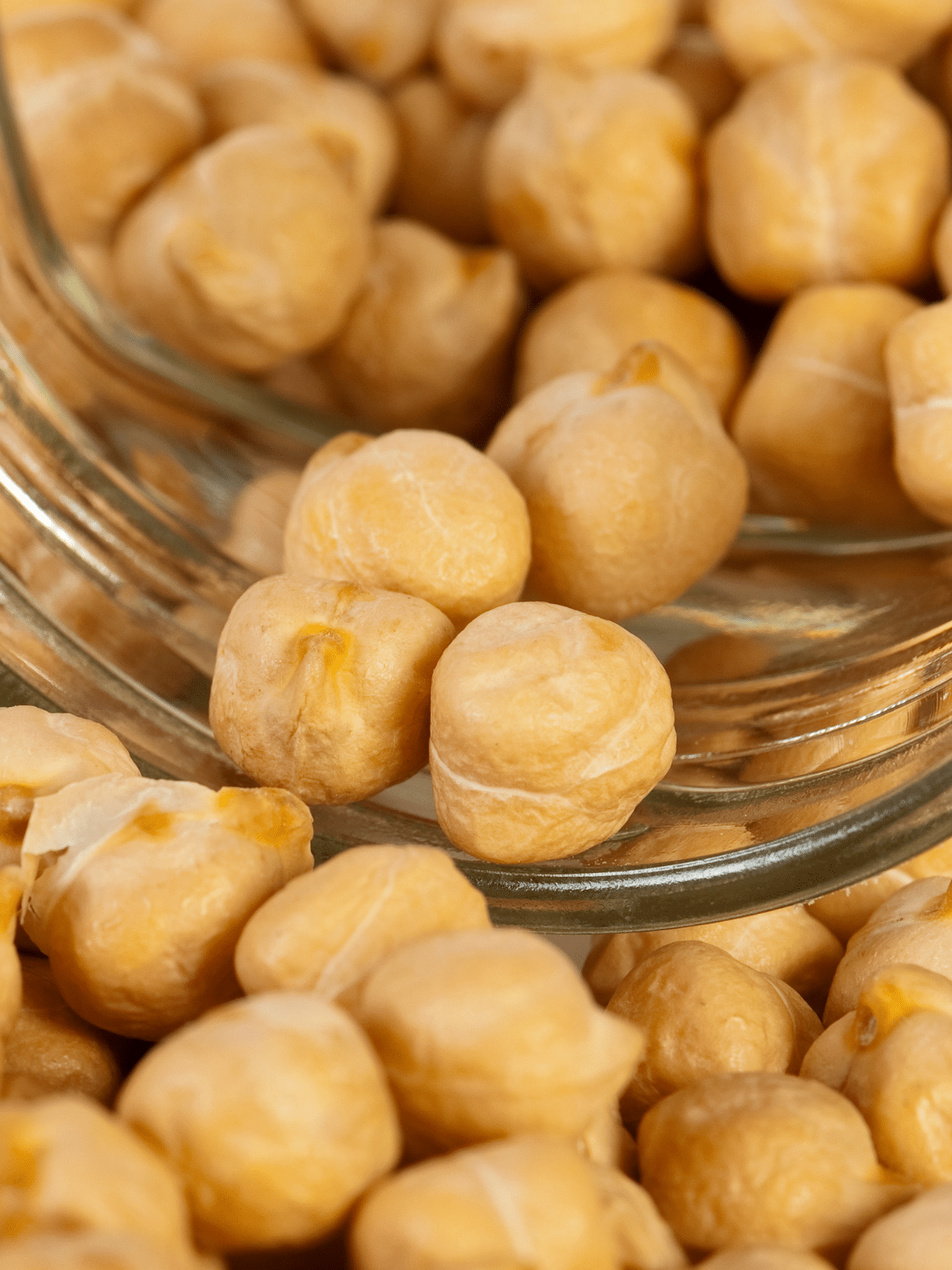
So for all the busy mamas out there whose kids won’t eat chickpeas, here are the best alternatives. Not only are they comparable in taste and texture, but they also offer a little bit more for you and your family.
Jump to:
- Why You May Need a Substitute for Chickpeas
- Best Substitutes for Chickpeas Based on Flavor and Texture
- Best Ways to Use Chickpea Substitutes in Recipes
- Potential Health Benefits of Chickpea Substitutes
- Some Precautions When Using Substitutes for Chickpeas
- FAQ
- Creating a Well-Balanced Diet with the Best Substitutes for Chickpeas
Why You May Need a Substitute for Chickpeas
Chickpeas, also known as garbanzo beans, have a very nutritious profile. They contain protein, fiber, and essential nutrients that support overall health. Their mild nutty flavor goes well with most ingredients — and in many cases, chickpeas can even enhance their flavor. This is why I love using them in a variety of dishes.
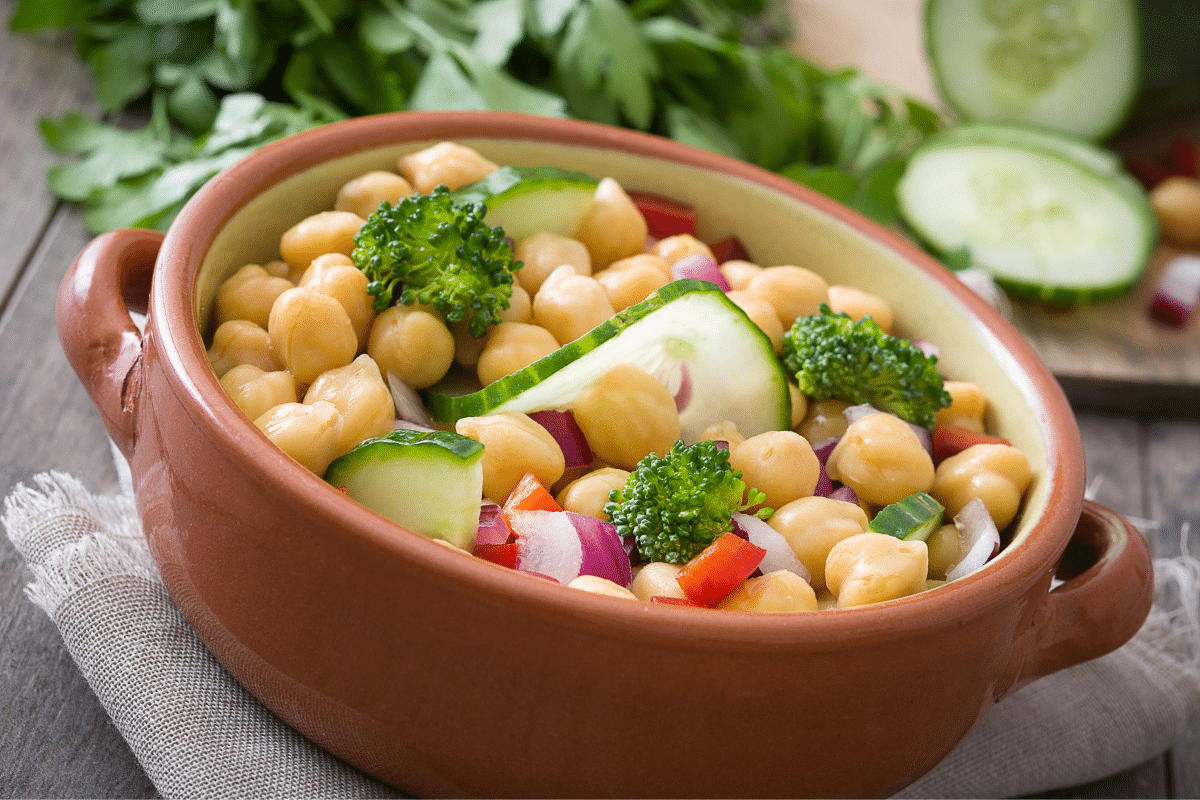
As nutritious as chickpeas are, they may not suit everyone. For some individuals, it might cause some side effects, including:
Gastrointestinal Symptoms
Chickpeas have been known to cause gas, bloating, and discomfort. It may even lead to nausea and vomiting. This is because chickpeas can be quite hard for the stomach to digest. So if you have family members with conditions like IBS, ulcerative colitis, and Chron’s disease, you may want to opt for a chickpea substitute instead.
Allergies
Some individuals may also be allergic to chickpeas. They contain an allergen that can trigger rashes, hives, itching, sneezing, swelling, shortness of breath, nausea, and inflammation.
Interactions with Medications
Chickpeas are high in potassium, which can be dangerous for those taking beta-blockers. Too much potassium can lead to heart palpitations, shortness of breath, nausea, vomiting, diarrhea, chest pain, and numbness. If left untreated, too much potassium can be life-threatening.
Excess Uric Acid and Kidney Stones
Chickpeas are also high in purines. Over-consuming them may lead to excess uric acid, which is the main cause of gout and kidney stones.
Best Substitutes for Chickpeas Based on Flavor and Texture
While not all items on this list are 100% similar to chickpeas, I have experimented enough in the kitchen to know that any of these ingredients will make a great substitute. You’ll soon discover that they deliver the same flavor and texture — and in many cases, have added features that make many different recipes even tastier!
1. Cannellini Beans
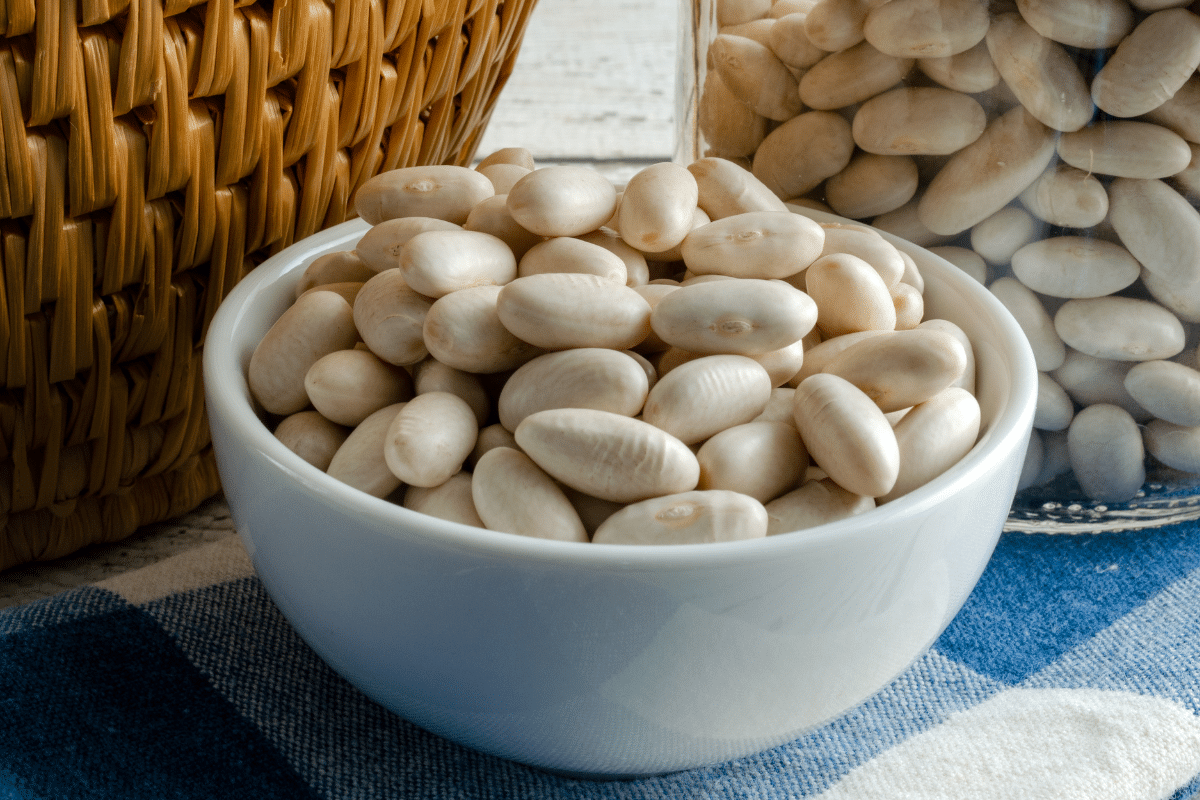
It doesn’t get any better than cannellini beans. Also known as white kidney beans, they’re one of the best alternatives to chickpeas. You’ll find that cannellini beans have the same mild nutty taste and creamy texture. And with a similar visual appearance, it may even seem like these beans are identical!
I love using cannellini beans as a substitute in soups, salads, meat and fish dishes, hummus, and spreads. While cannellini beans have more protein and less fat than chickpeas, they also have more carbs per serving. On the other hand, you get more calcium and potassium.
2. Black Beans
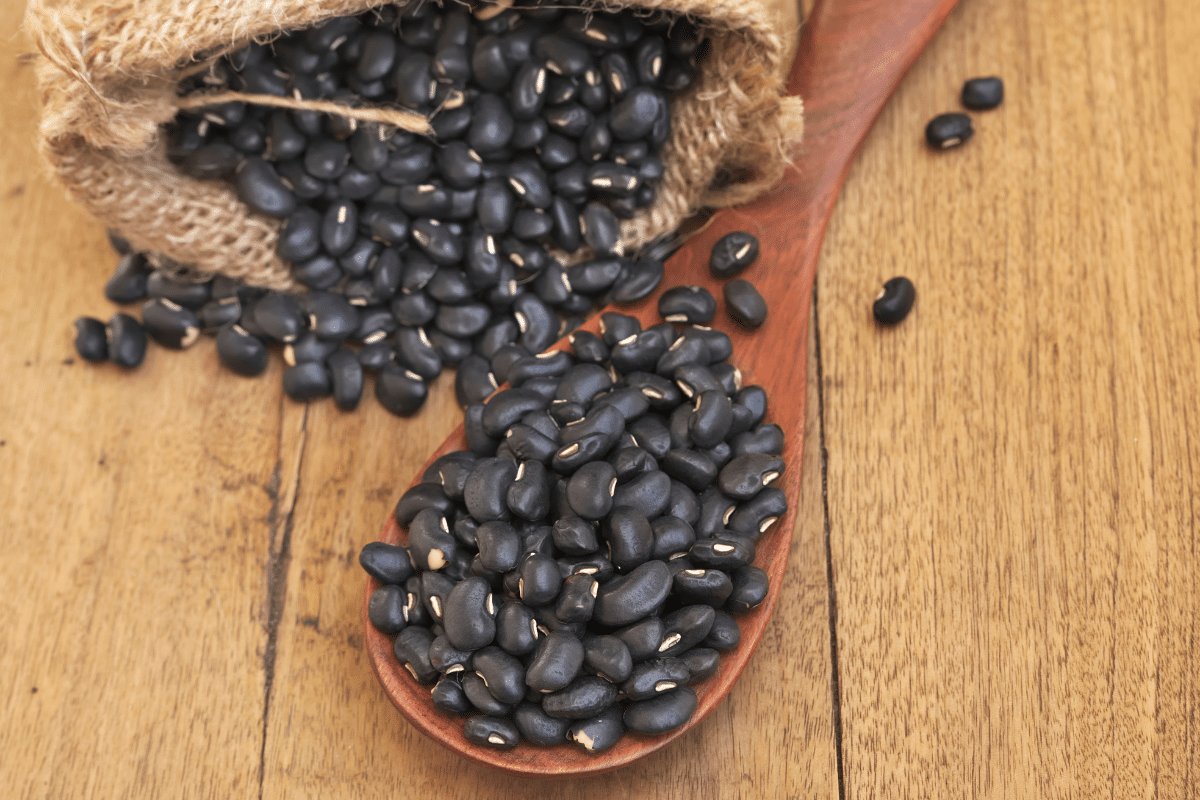
Black beans, also known as turtle beans, are another ideal substitute for chickpeas. They have a mild, earthy taste with a hint of sweetness — which is very close to the flavor of chickpeas. The smooth texture is ideal for replacing garbanzo beans in broths, salsas, chilis, and dips.
Since black beans combine well with herbs and spices, you’ll discover that they work well in many recipes like black bean hummus, that you would normally use garbanzo beans in. Also, with fewer calories, fat, and sugar, they may even be healthier than chickpeas.
3. Lima Beans
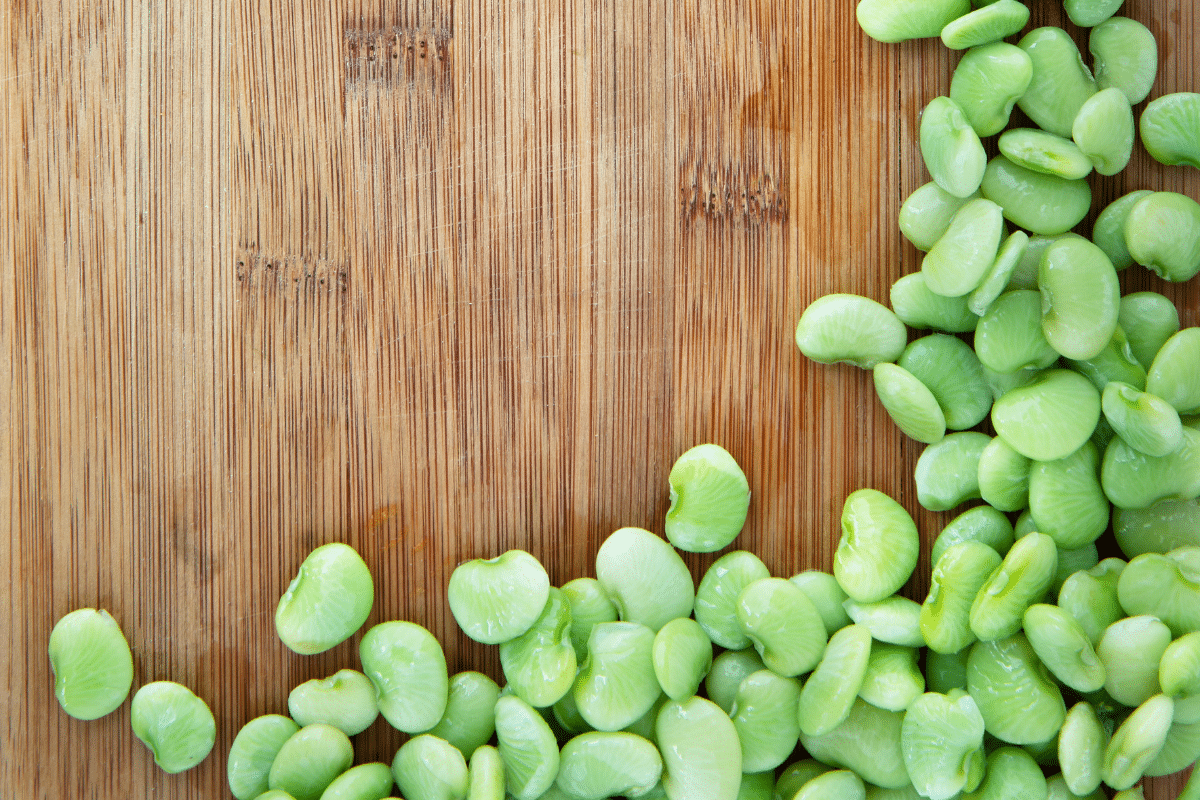
Lima beans, or butter beans, are just as creamy as chickpeas. With similar nutty and sweet undertones, I find lima beans are great replacements in chilis, stews, and casseroles.
However, overcooking lima beans can make them taste bitter, so that’s something you should look out for when cooking with this substitute ingredient. An added benefit is you’re getting more vitamin C, niacin, and potassium with lima beans.
4. Pinto Beans
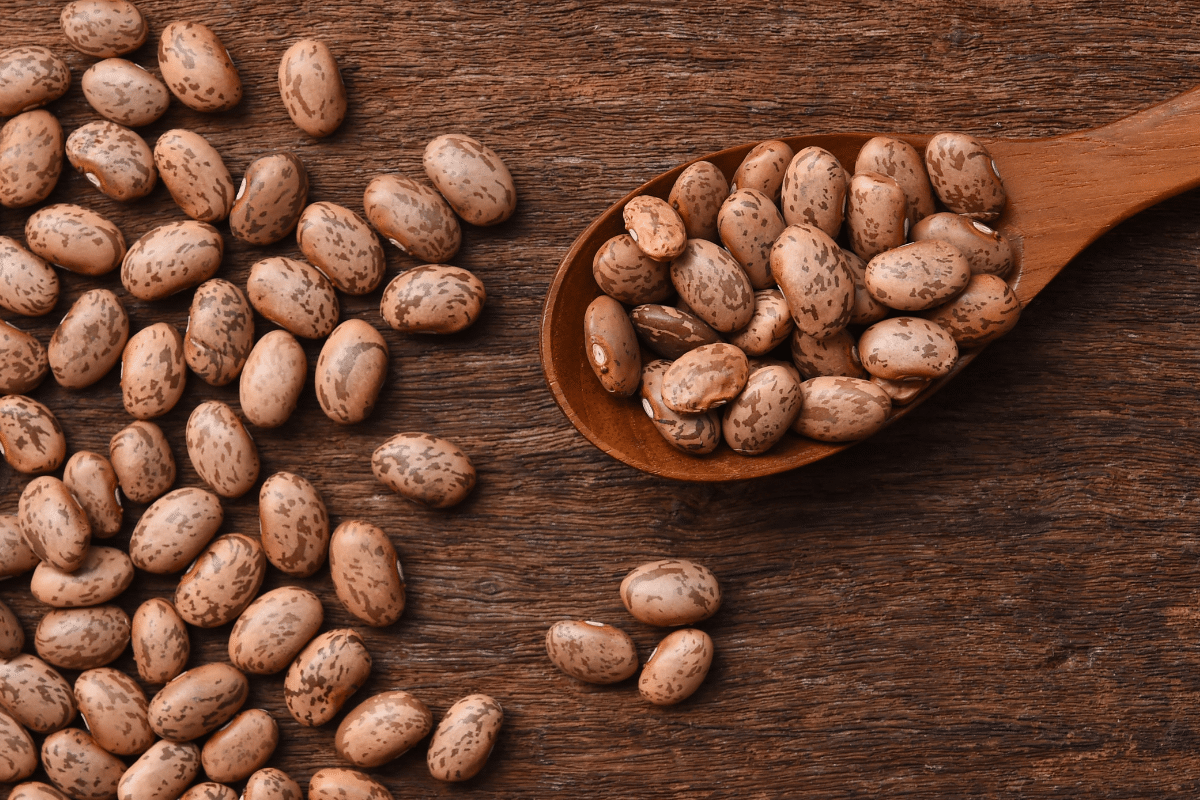
If you’re someone who appreciates the creamy, earthy flavor of chickpeas, you’ll discover that the flavor is even more enhanced in pinto beans. This added earthiness makes pinto beans a good replacement for chickpeas in stews, chilis, and casseroles. With fewer calories, carbs, and sugar, you’ll also be able to indulge a little bit more without the guilt!
5. Great Northern Beans
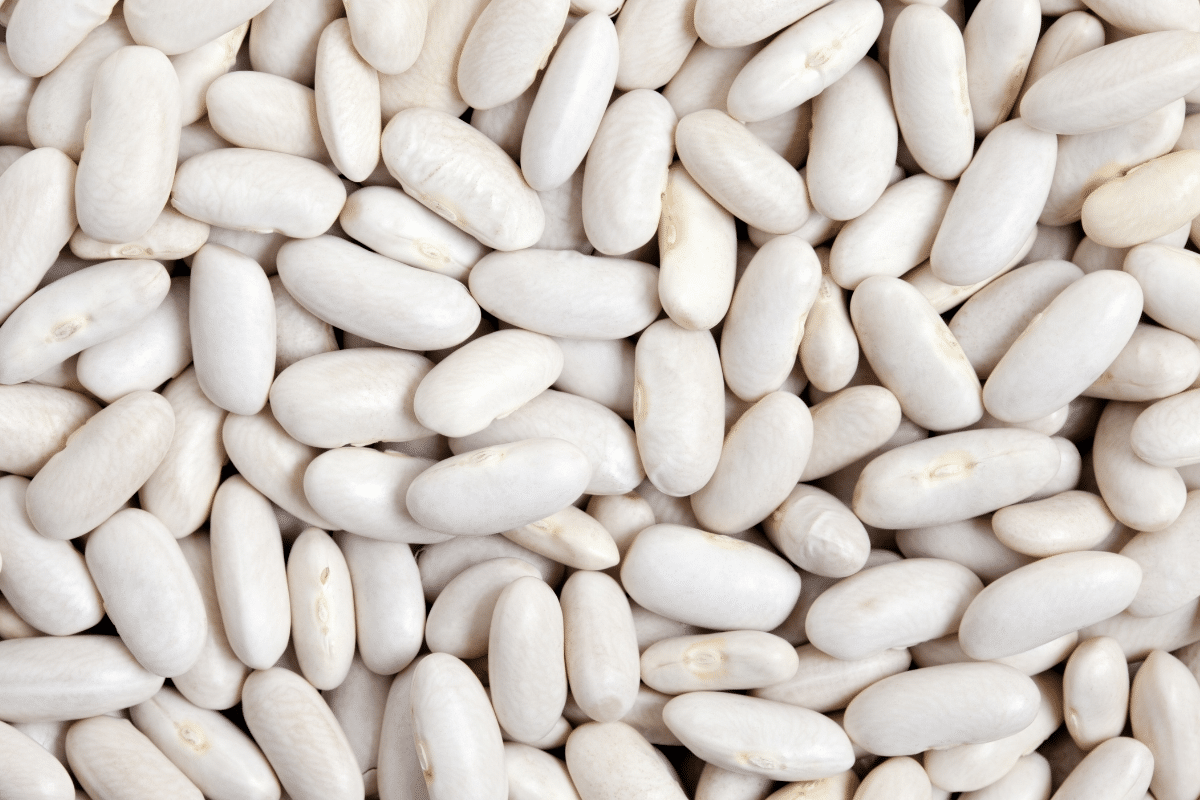
Great northern beans are comparable when it comes to the flavor, texture, and color of chickpeas. They’re a great substitute in white chili, stew, soup, and salad recipes. Great northern beans also have less sugar and more iron, fiber, and phosphorus than chickpeas.
6. Navy Beans
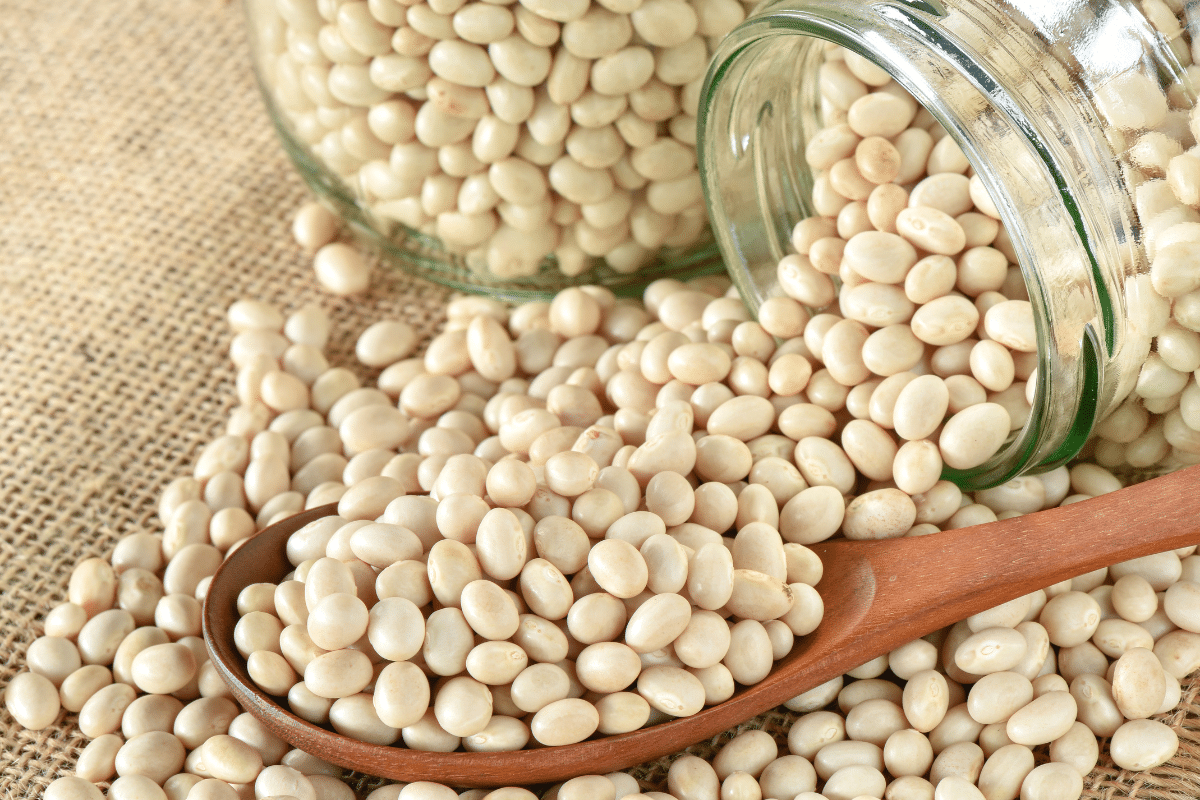
You can opt to use navy beans — also known as pea beans — as an easy chickpea replacement for soups, chilis, and stews. I love the mild, nutty flavor and velvety texture these beans provide in stews. In addition, navy beans have more fiber, vitamin B1, and magnesium than chickpeas.
7. Red Kidney Beans
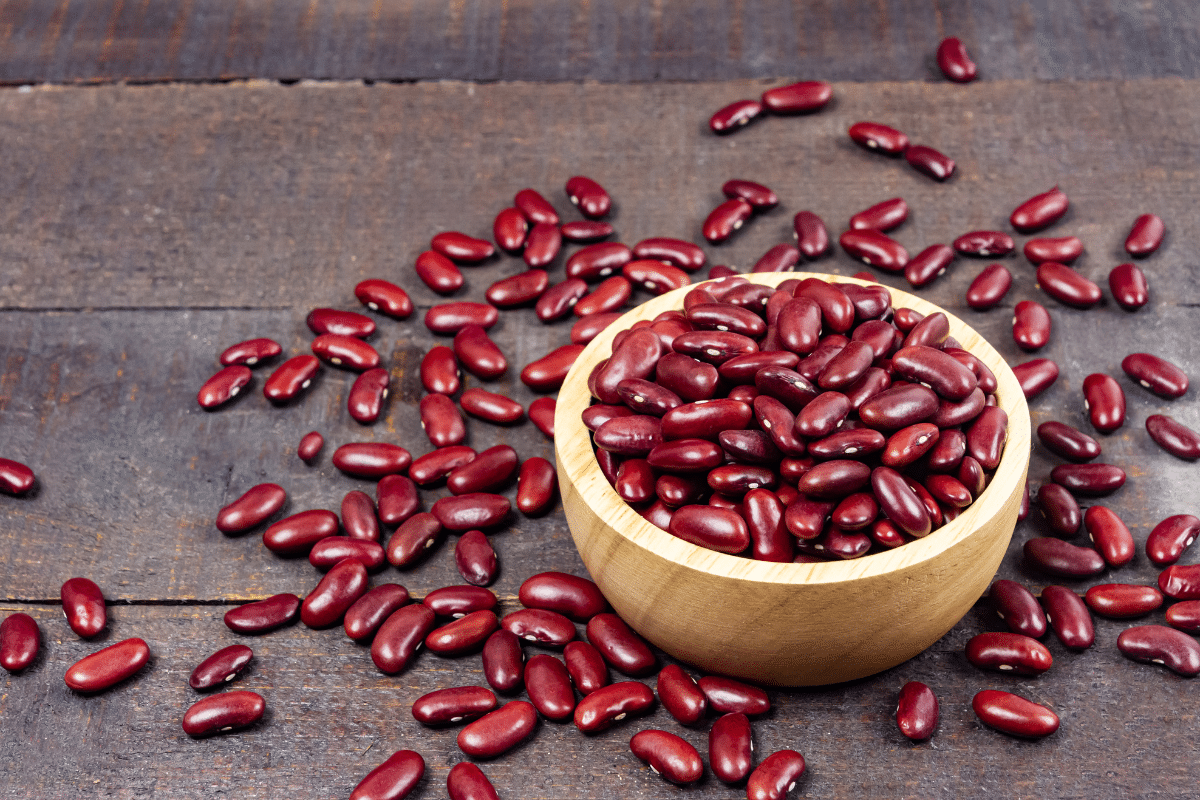
Kidney beans could very well be a perfect substitute for chickpeas, depending on what you’re cooking. They have a similar taste and texture to chickpeas. The major difference is the dark red color.
However, that won’t be too much of an issue. Since kidney beans are great in chilis, curries, and casseroles, their red hue makes your dishes even more mouth-watering and tantalizing! Also, substituting with kidney beans means fewer calories, carbs, fat, and sugar.
8. Soya Beans
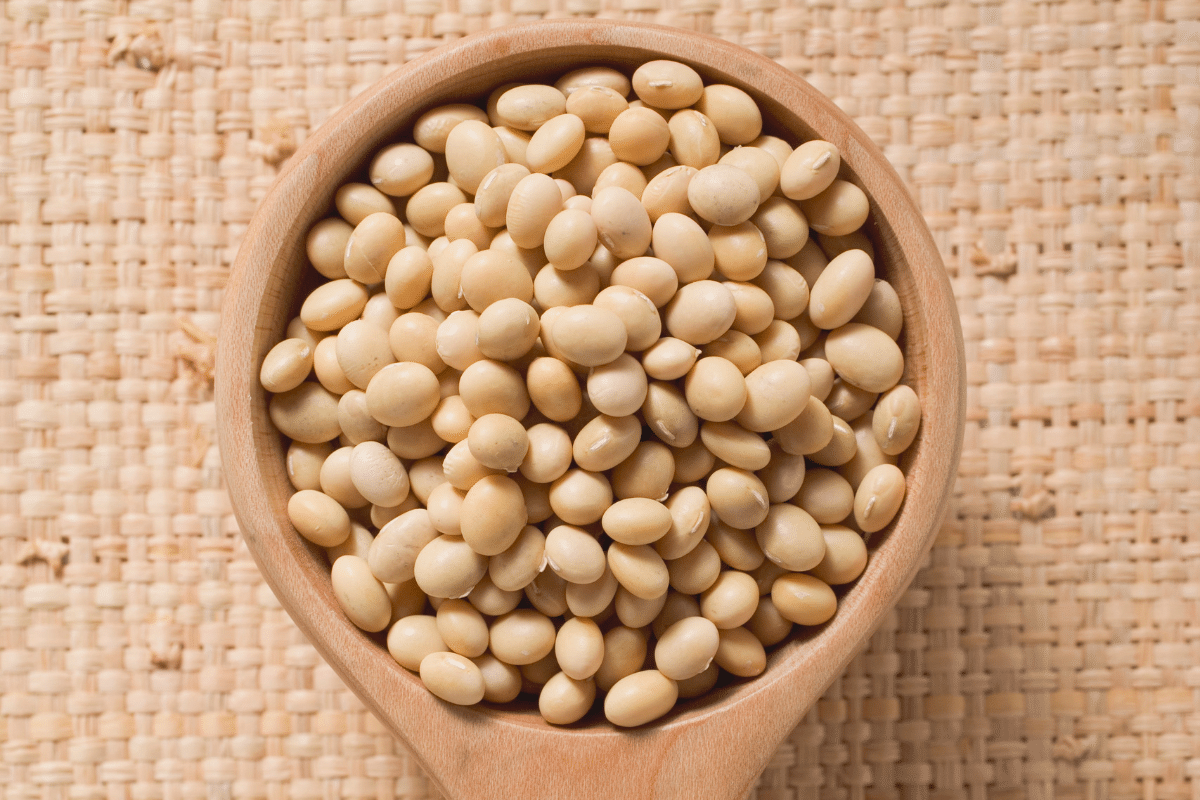
Similar to chickpeas, soya beans or soybeans serve as an excellent protein. They also provide the same mild, earthy flavor. My kids can tolerate soya beans, so I like using this as an alternative.
It’s also fair to say that soya beans are healthier than chickpeas. However, soya bean dishes should only be eaten in moderation. This is because they contain isoflavones that have been linked to a wide range of health issues.
Nonetheless, you can use soya beans as a substitute for chickpeas from time to time. They’re great to use in broths, salads, casseroles, and noodle dishes. Soya beans have a versatile flavor profile, so you can use them for many cuisines.
9. Edamame
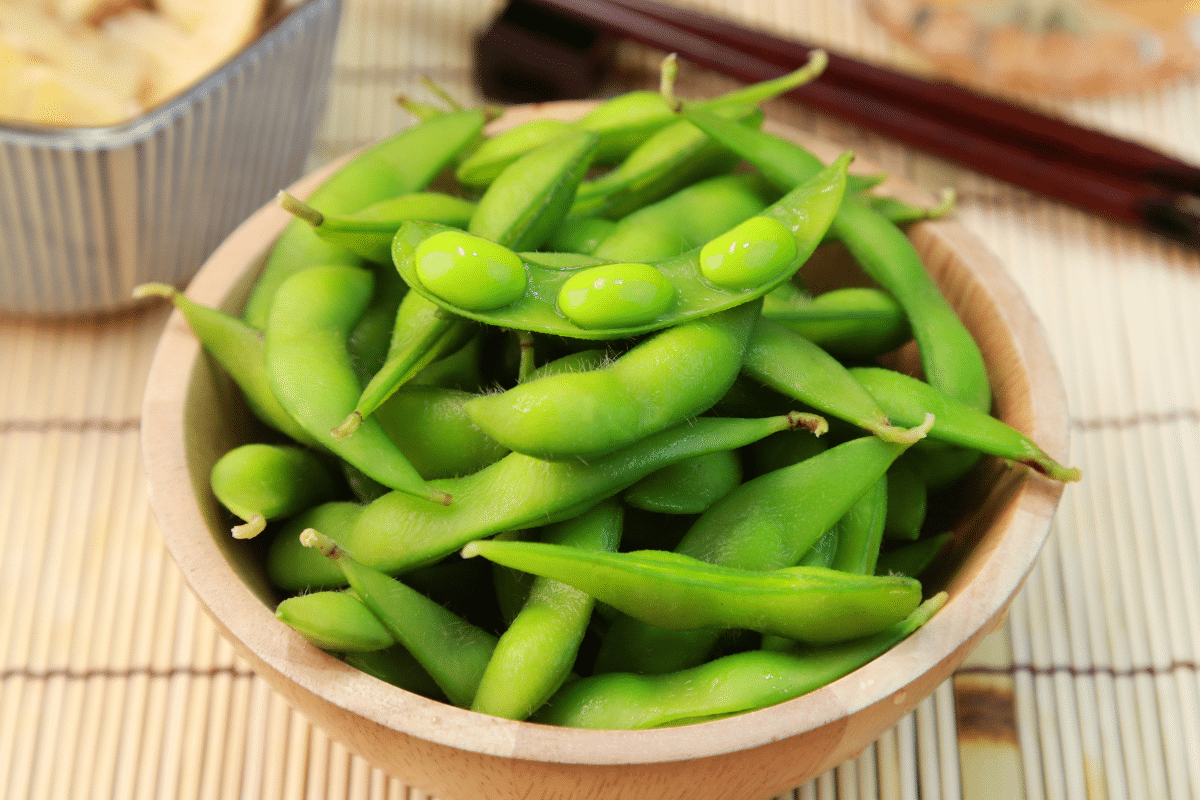
If you enjoy high-protein snacks like roasted whole chickpeas, consider adding edamame to the mix! This is a great chickpea replacement because it delivers the same nuttiness and sweetness.
You can also roast them to get that crunchy texture. Best of all, edamame has fewer carbs, calories, and sugar, so you won’t feel as guilty when eating this addictive snack!
10. Mung Beans
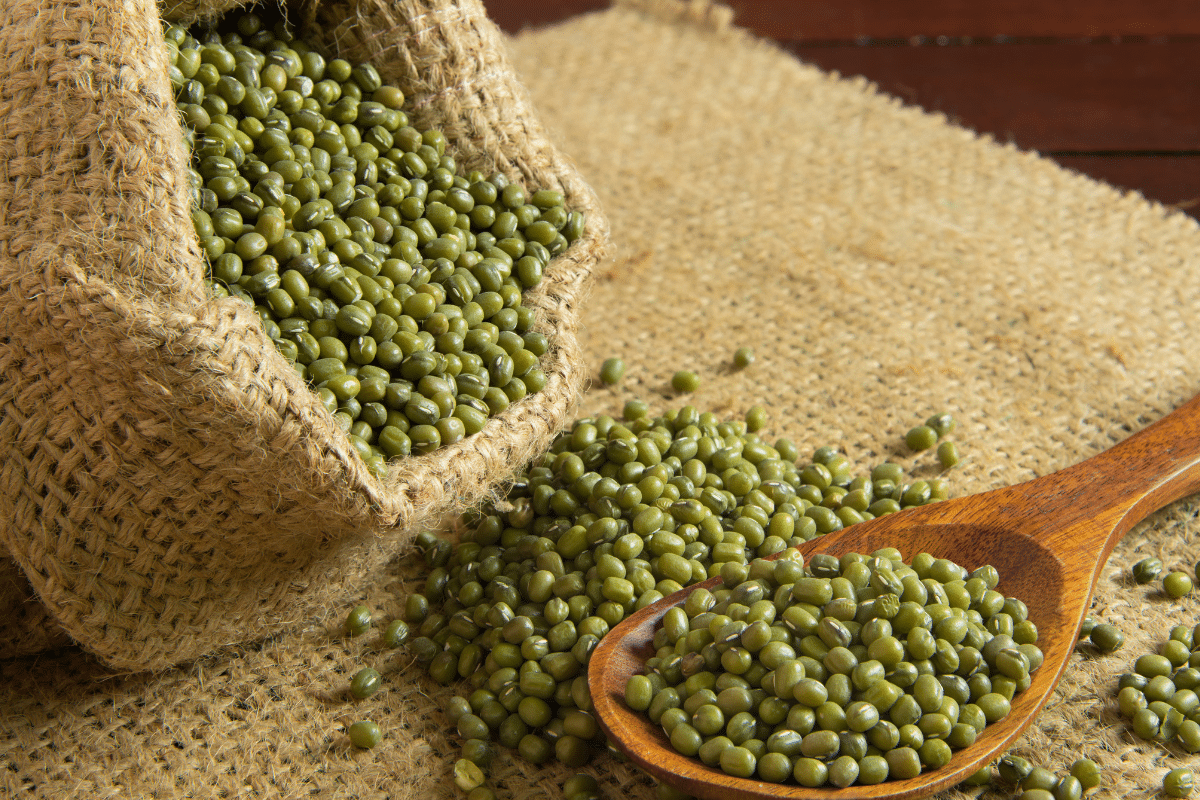
Mung beans are also a great alternative in recipes that call for chickpeas. This includes rice dishes, casseroles, and soups. You’ll get more protein, vitamin C, B vitamins, calcium, iron, and potassium.
On the other hand, mung beans have more carbs and calories. For variety, consider mung beans instead of chickpeas from time to time.
11. Green Peas
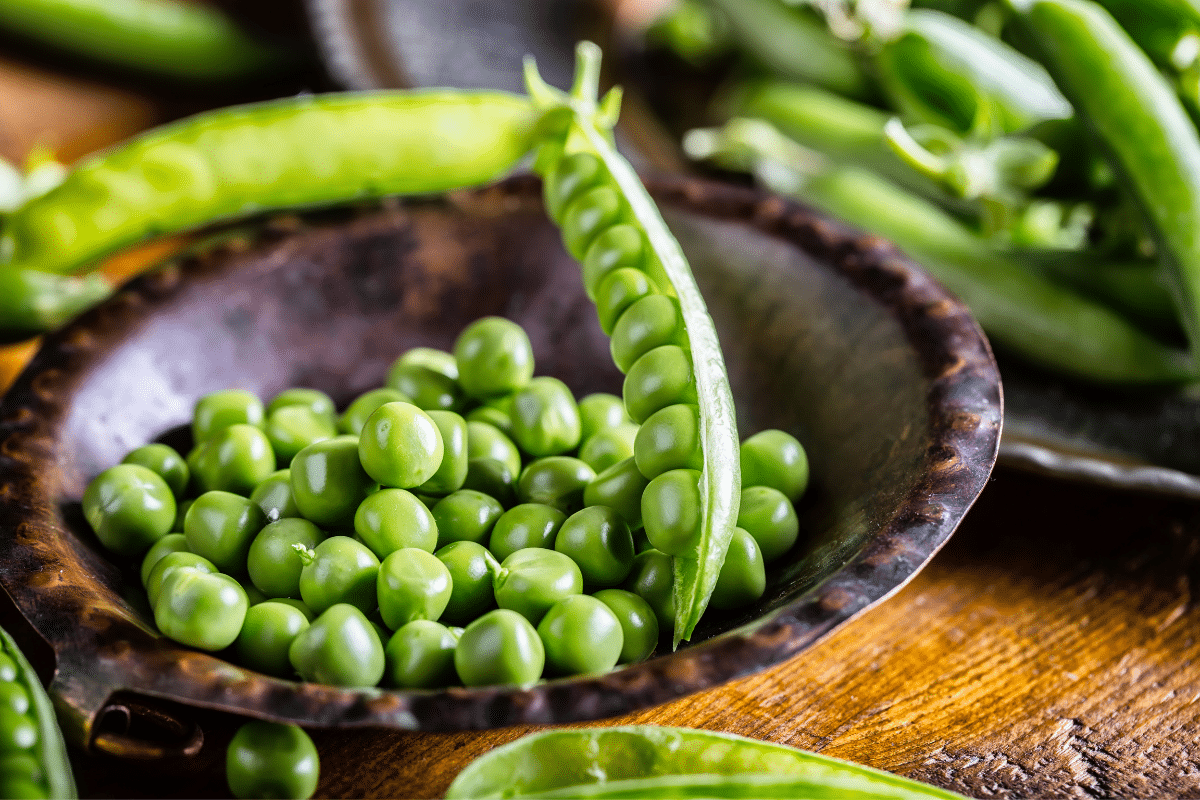
I thought green peas might seem like a weird substitute at first. However, this is one of the best substitutes for those who want the healthy goodness of chickpeas but don’t like their taste.
These peas have their own unique flavor that can enhance the taste of your meat and fish dishes, salads, hummus, porridge, broths, and casseroles. Green peas offer more of vitamins A, C, K, and B. They also have less fat, carbs, and sodium.
12. Split Peas
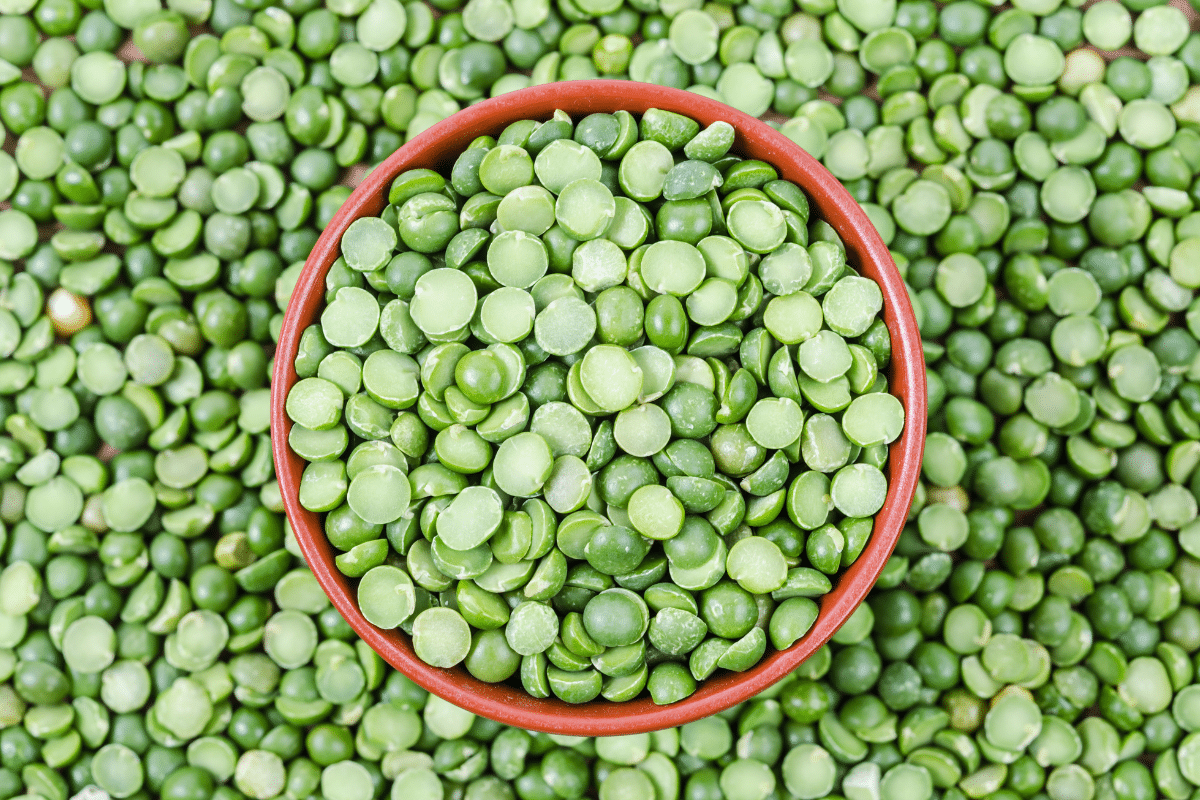
Split peas have a similar taste to chickpeas, but taste more like green peas. The sweetness and creaminess can enhance your meat and seafood dishes, chowders, stews, and broths. You also get more protein, fiber, and less fat, calories, and sugar than chickpeas.
13. Green Lentils
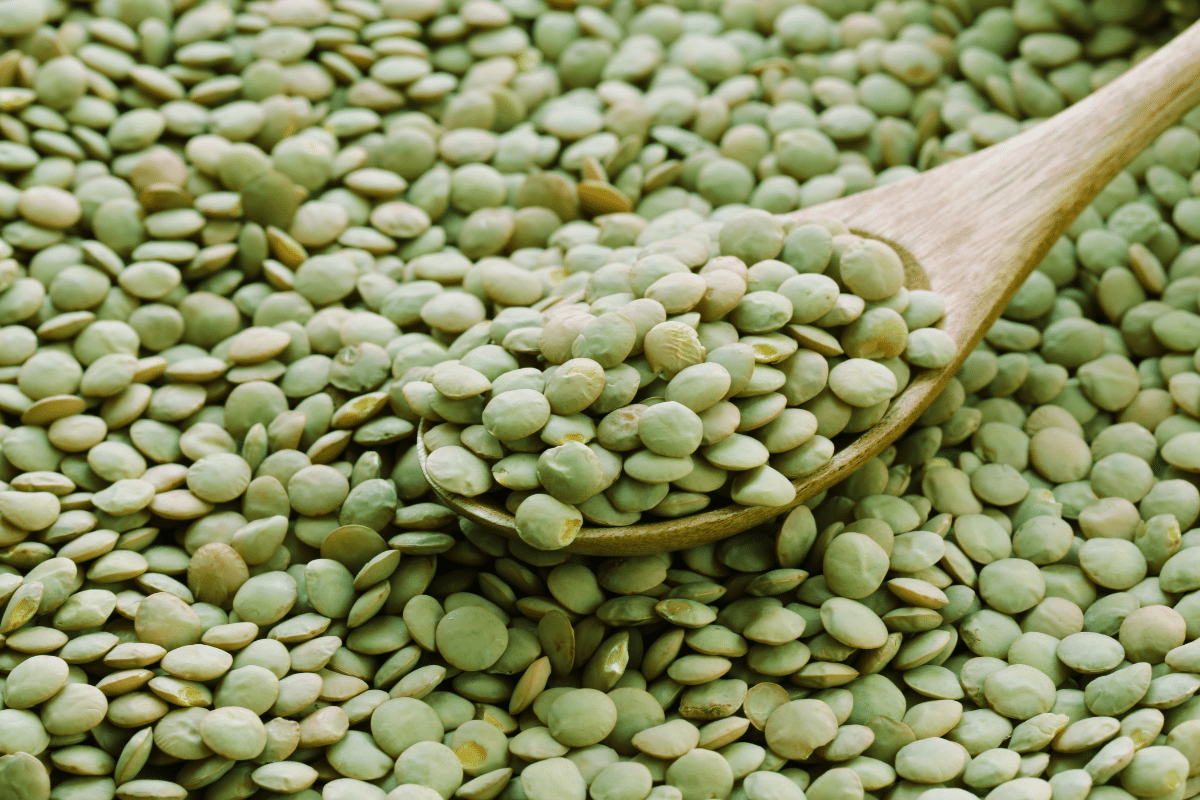
Green lentils are also a great substitute for chickpeas, giving you more varied flavors. They still maintain the nutty flavor — but with a peppery kick. I like adding them to salads and spreads. They’re just as protein-packed as chickpeas but with less carbs, sugar, and fat.
14. Red Lentils
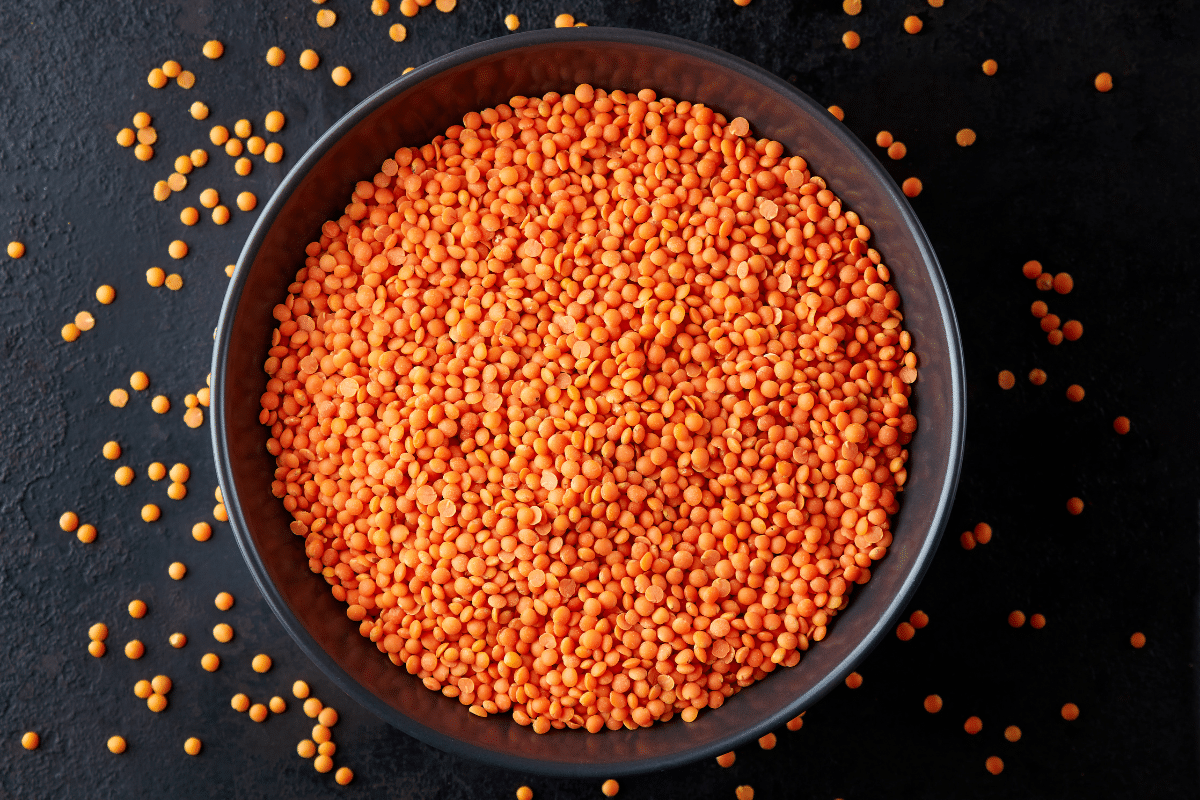
Red lentils have the same nutty flavor and creamy texture as chickpeas. They’re a tad sweeter, which makes them perfect for soups, salads, and purees. They have a similar nutritional profile to other lentils, and provide more iron, vitamin B6, B9, and phosphorus.
15. Yellow-Brown Lentils
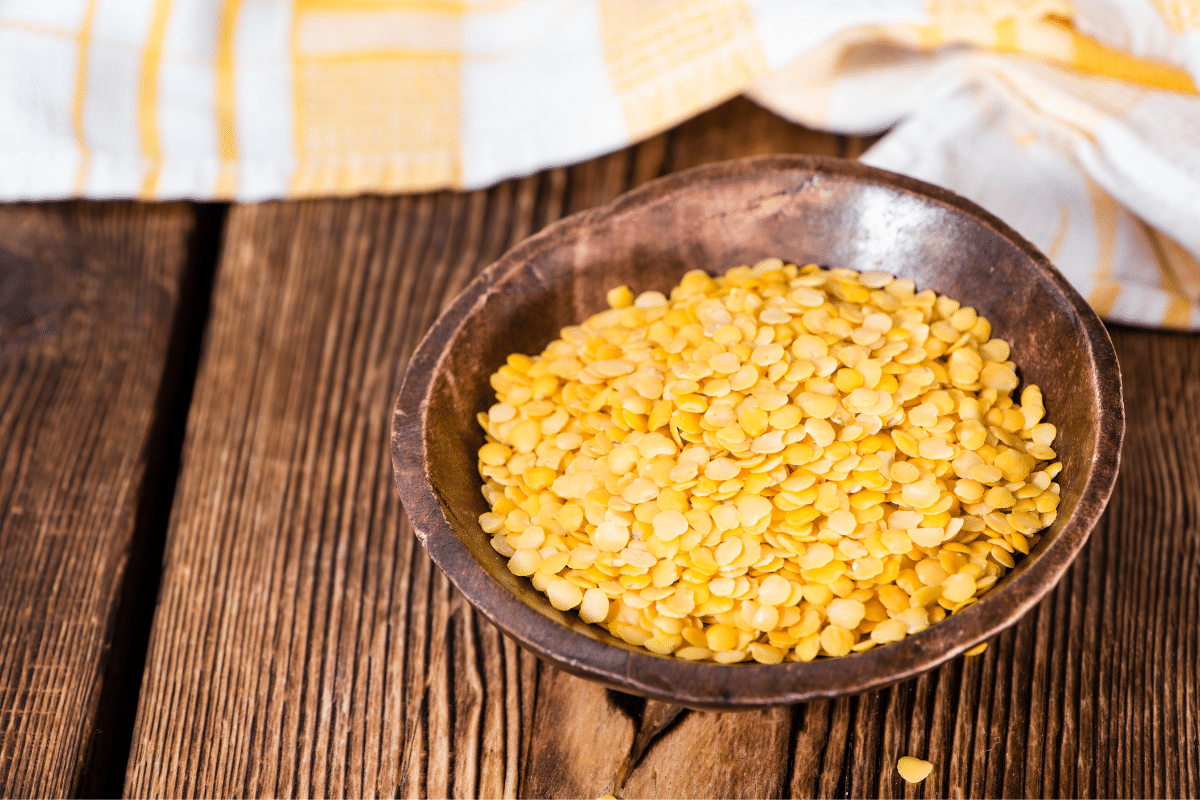
Another type of lentil is the yellow-brown lentil, which has a deeper earthiness than chickpeas. They’re perfect to use for savory dishes like casseroles and broths.
16. Peanuts
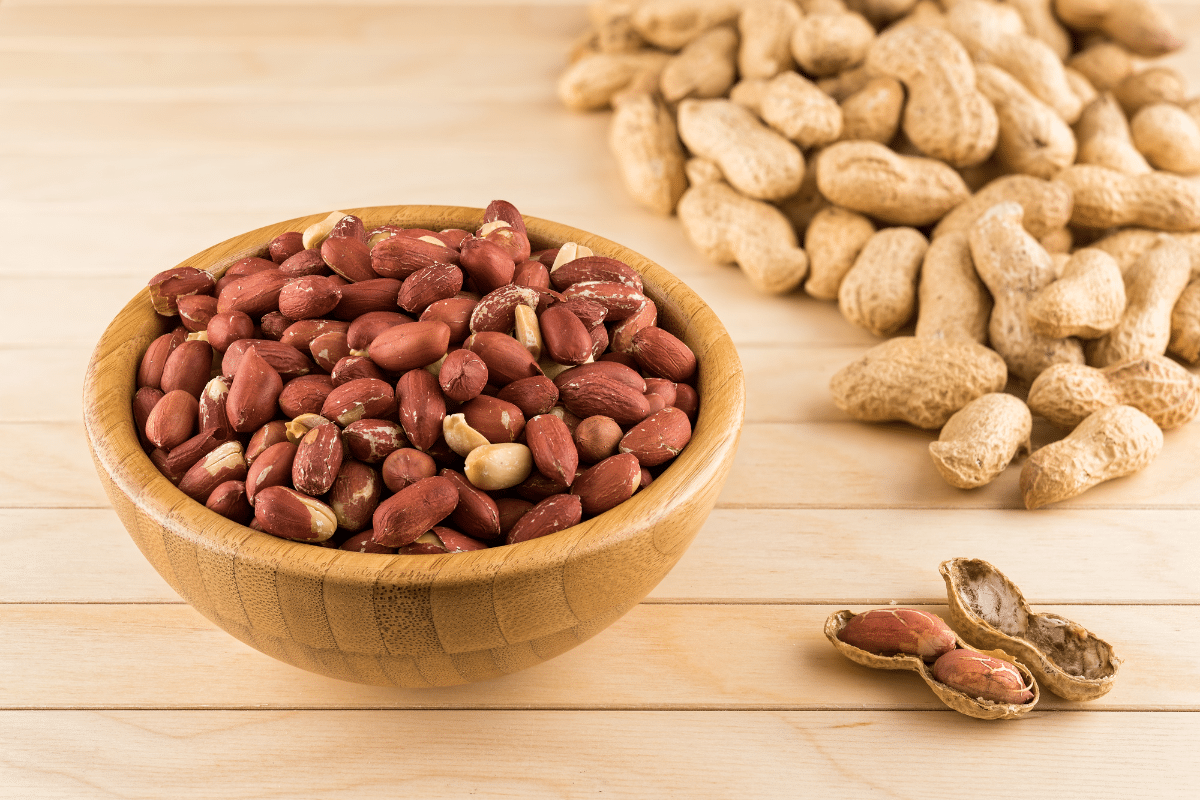
Peanuts are legumes, so you still get that mild nutty flavor with this chickpea alternative. You can use peanuts for purees, dips, casseroles, and slow-cooked dishes. You can also roast them to give salads and other dishes added crunch.
You might be pleasantly surprised to learn that peanuts are among the best chickpea substitutes for dessert recipes. Instead of using chickpea flour, grind the peanuts into powder using a food processor. Then, use that to bake desserts like cakes and cookies.
17. Hazelnuts
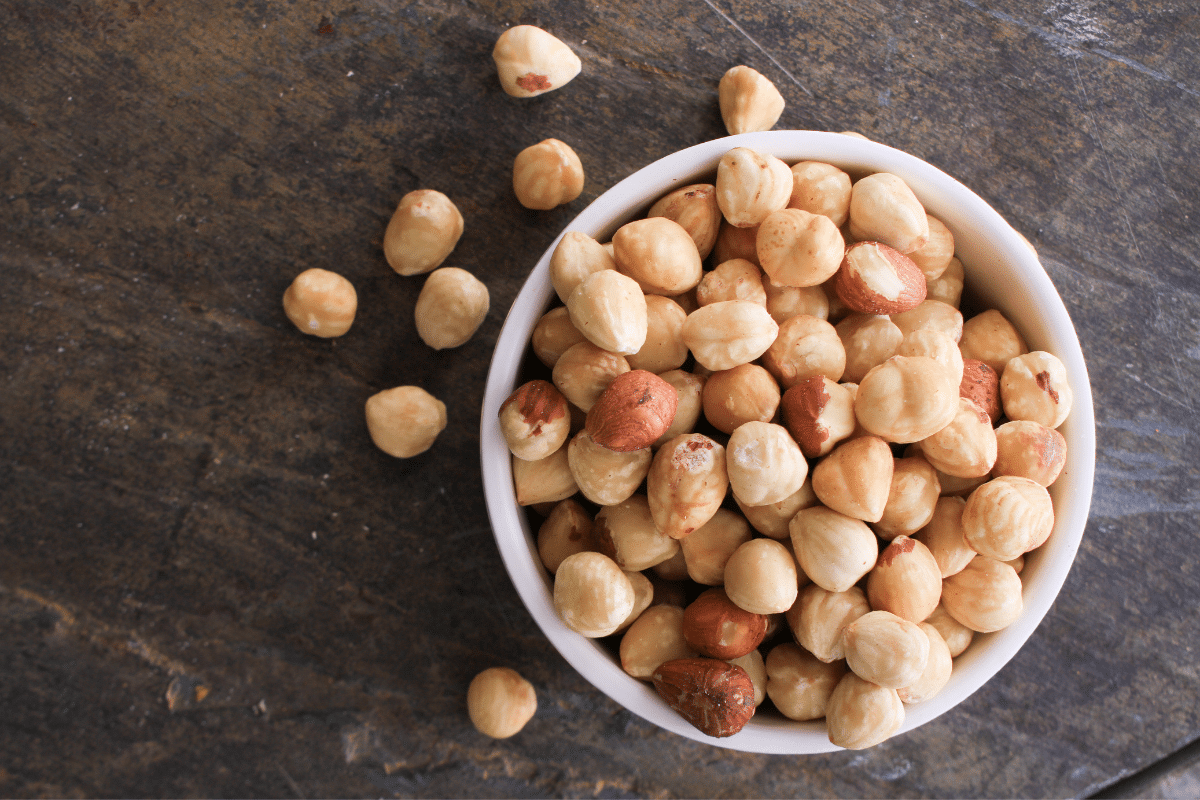
Hazelnut is another nut that can be used instead of chickpeas in baking. Aside from desserts, you can use hazelnut flour to make pancakes and fritters. Hazelnuts can also be used for mixed greens and savory dishes, and can also serve as a crunchy snack.
However, cooking hazelnuts may produce a different flavor, so they might not taste exactly like chickpeas. Don’t worry, though, they’re just as delicious!
18. Cashews
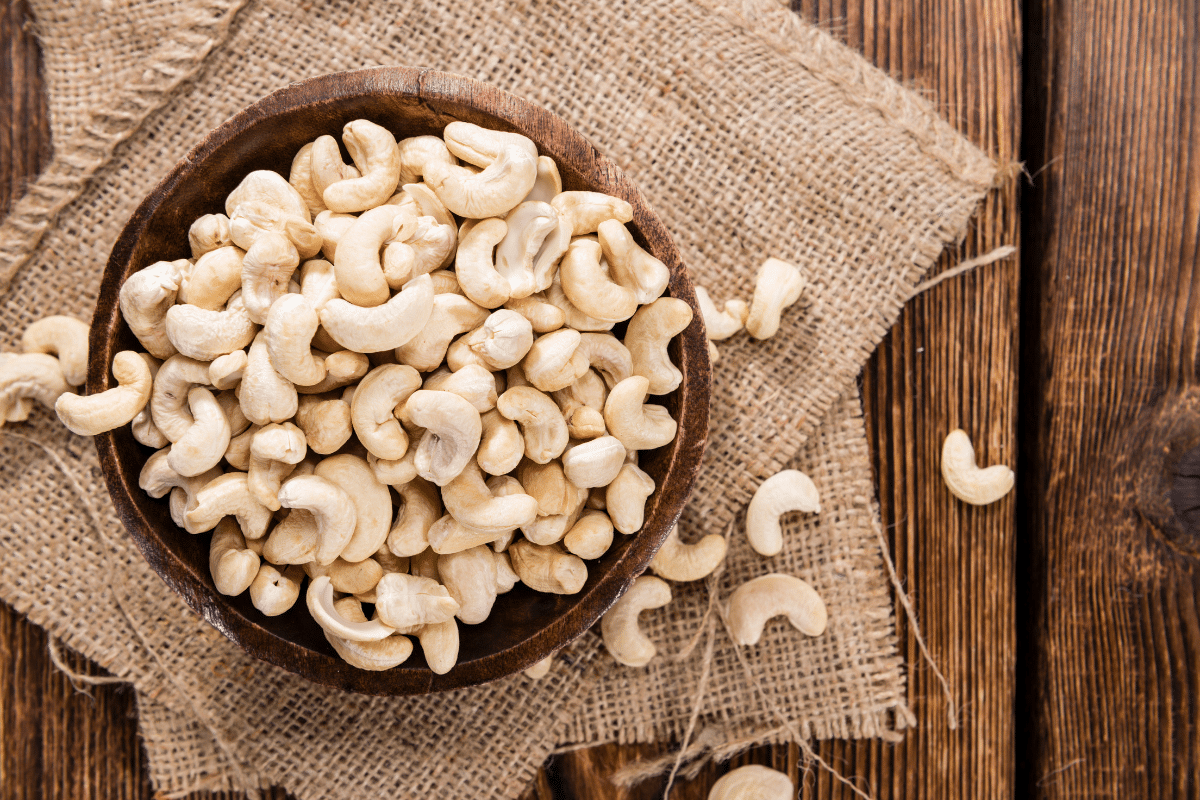
Cashews are just as nutty and creamy as chickpeas. Their color even looks the same! They can be used to replace chickpeas in hummus, spreads, bread, and desserts. While you get much more nutrients, cashew dishes are more expensive to prepare. So, I suggest you only use them for special occasions.
19. Cauliflower
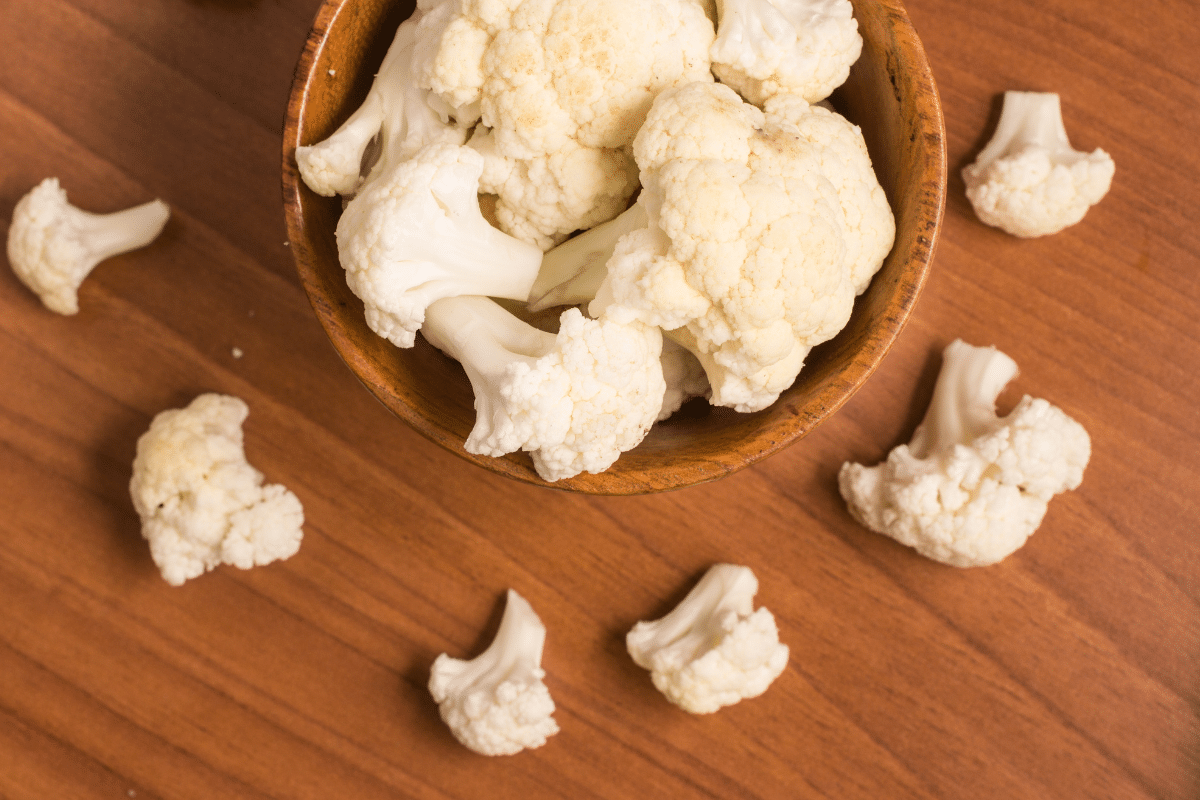
Cauliflower may be the weirdest substitute on this list yet, but hear me out! In terms of flavor, you’re getting the same nutty and sweet undertones. So you can use cauliflower to create bean-free chilis, casseroles, and curries.
In puree form, you can add cauliflower to spreads and dips. Meanwhile, roasted cauliflower is just as delicious as roasted chickpeas.
20. Sunflower Seeds
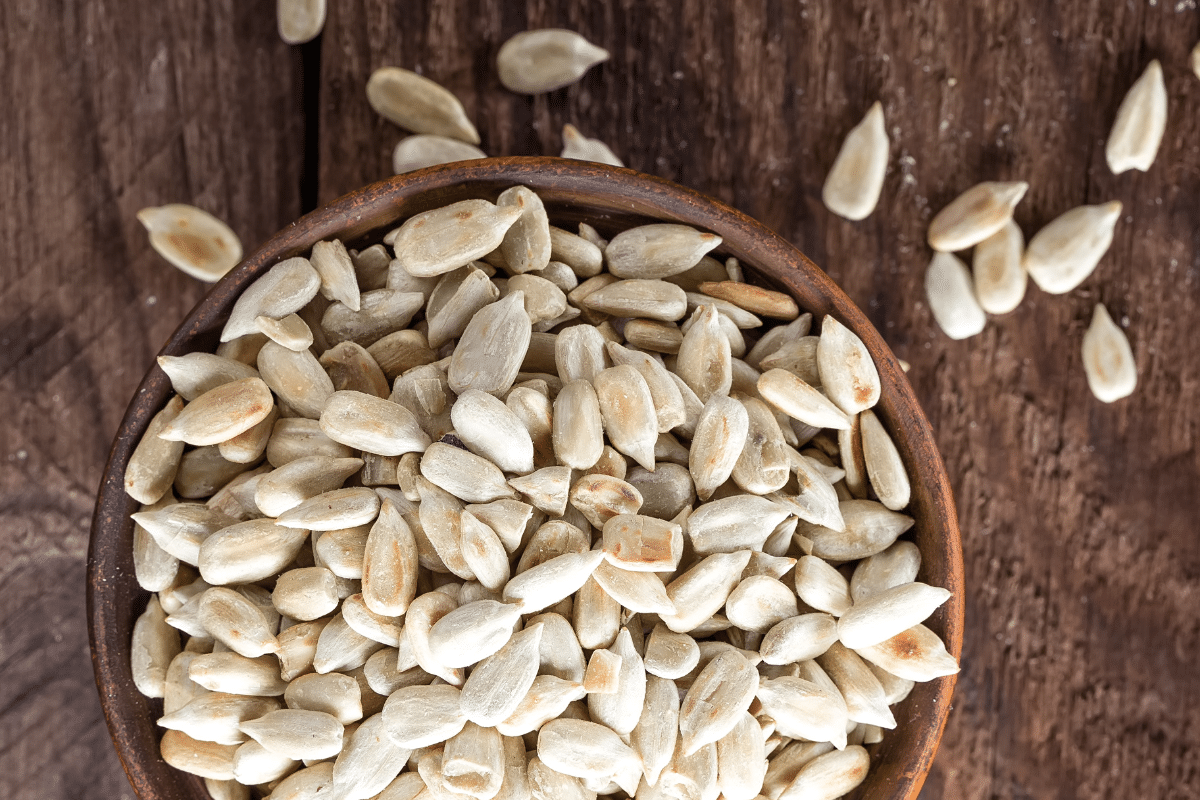
Sunflower seeds are perfect for those who enjoy the nutty flavor of chickpeas but have nut allergies. These seeds may have a firmer texture but make a great snack when roasted.
21. Quinoa
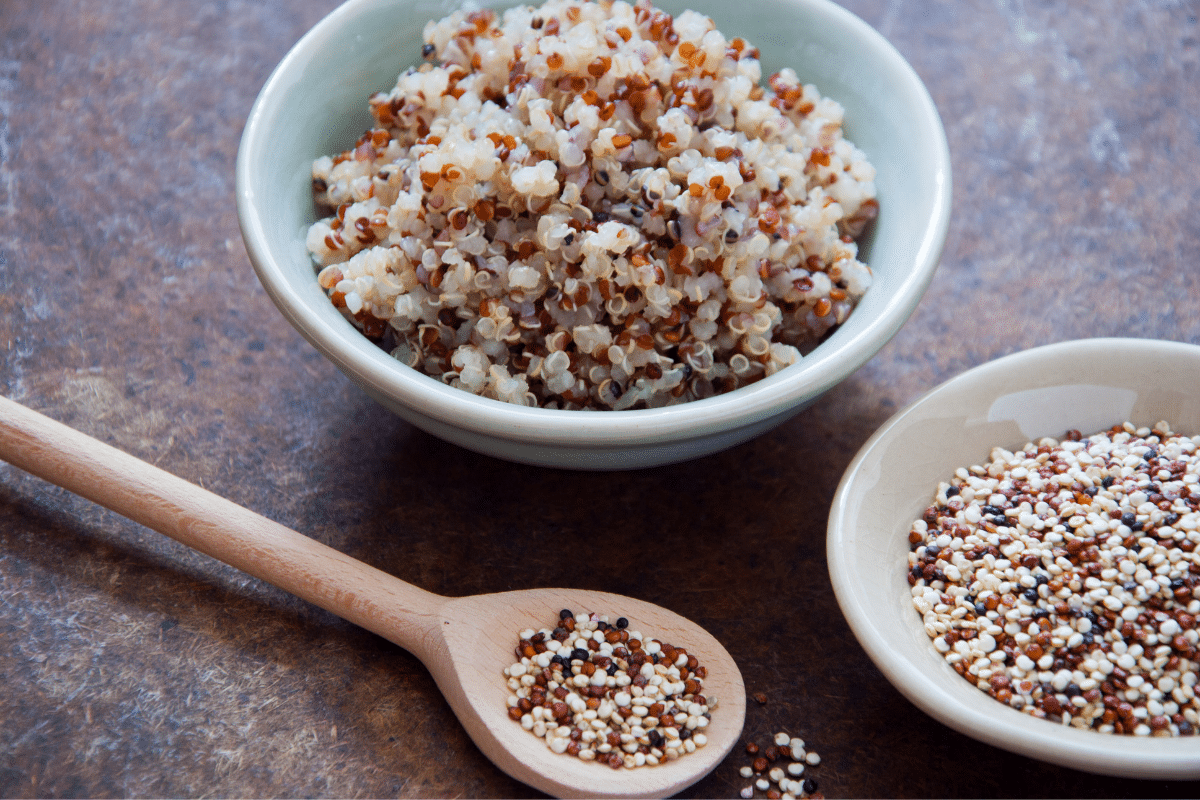
With the right recipes, you can easily swap out chickpeas with quinoa. Quinoa has a similar nutty flavor, but the texture is not exactly the same. It makes a great addition to mixed greens, soups, and falafel. You can also toast quinoa to create a crunchy treat.
Best Ways to Use Chickpea Substitutes in Recipes
You may be overwhelmed by the number of chickpea substitutes. Don’t worry because no matter your choice, you can’t go wrong!
Most of these ingredients are just a 1-to-1 replacement, so you won’t have to fuss about recipe conversions. All it takes is a simple swap, and your entire family can enjoy these healthy ingredients!
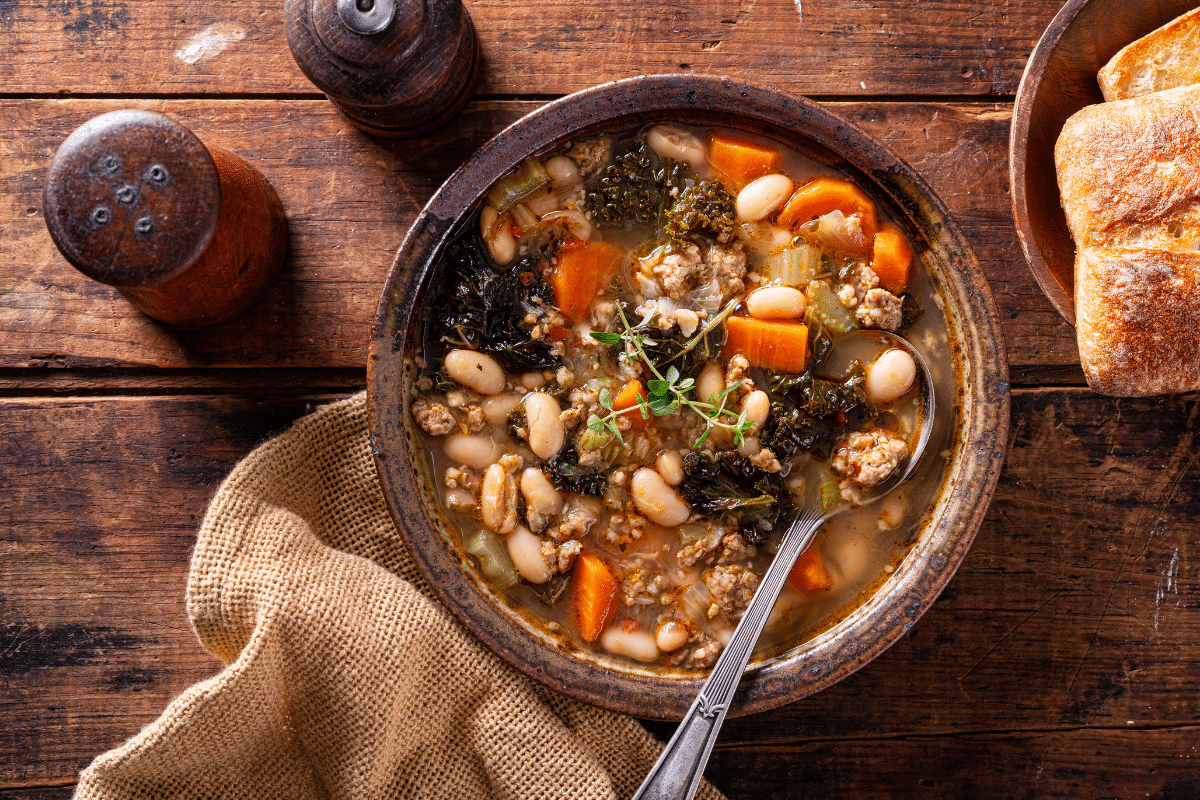
To save even more time in the kitchen, here’s a cheat sheet that you can use. Whenever a recipe calls for chickpeas, and you need a substitute, remember the following:
Best for Curry Recipes: Cannellini beans, lentils, cauliflower
Best for Hummus and Sauces: White beans, black beans, split peas, edamame, cashews, cauliflower
Best for Falafel Recipes: Green lentils, soya beans, quinoa, mung beans,
Best for Salad Recipes: Soybeans, edamame, green peas, cauliflower, white beans, quinoa
Best for Chilis and Stews: Beans, cauliflower, lentils
Best for Baking: Nuts, quinoa, blended white beans, lentil flour
Potential Health Benefits of Chickpea Substitutes
Even though you’ve opted for chickpea alternatives, the good thing is that they will still provide you with the same health benefits of chickpeas. This includes:
- Lowering cholesterol levels
- Regulating blood sugar and insulin
- Supporting healthy weight management
- Improving digestion
- Keeping bones strong and healthy
- Preventing anemia
- Improving mood and memory
- Neutralizing free radicals
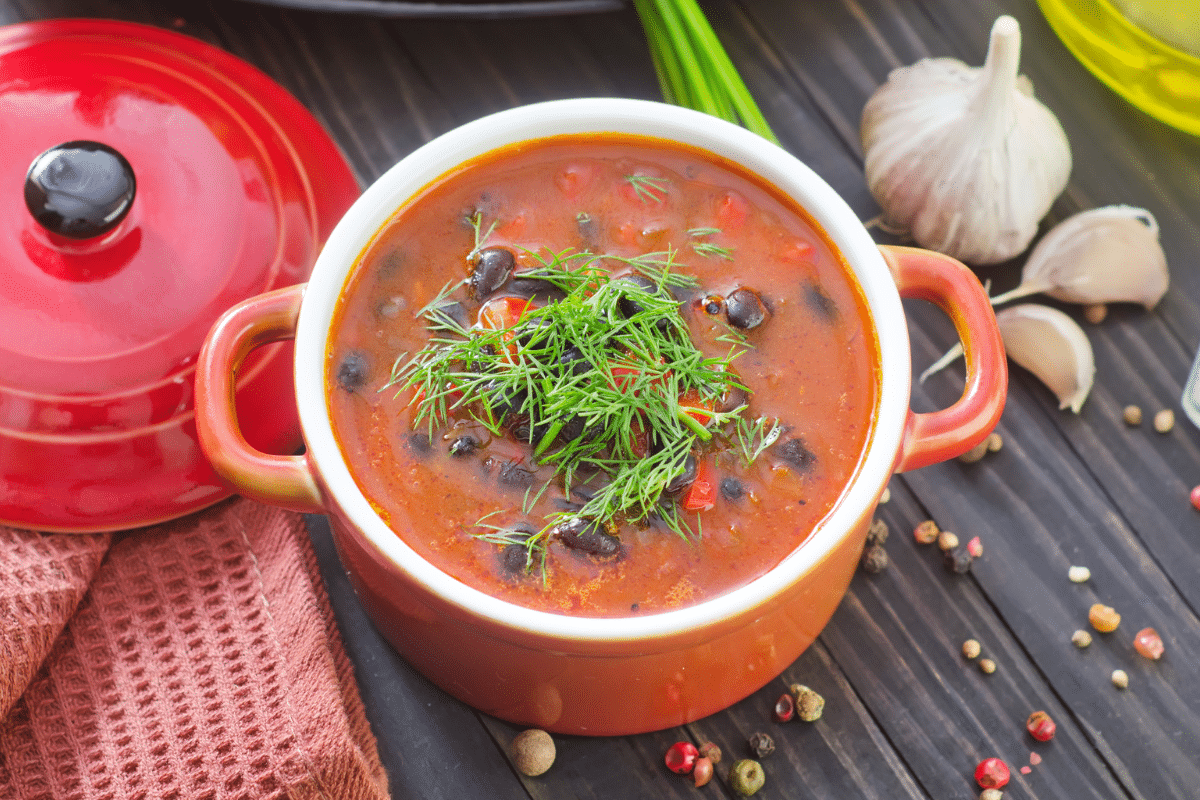
With essential vitamins, minerals, and other natural substances, these substitutes are just as nourishing as chickpeas. They will also serve as great staples in your cooking repertoire.
Some Precautions When Using Substitutes for Chickpeas
Considering that many of the substitutes for chickpeas belong to the same legume family, it’s possible that they share side effects. In particular, other types of beans may cause gas, bloating, and discomfort. Some people may also be allergic to beans, lentils, nuts, and quinoa.
So if you or your family members have health concerns, it’s always best to consult your trusted medical professional. Also, make sure to consume protein in moderation. By staying within the recommended daily values, you can lessen the risk of side effects.
FAQ
Chickpeas are also known as garbanzo beans, meaning they’re part of the same legume family as other beans. This is why many beans serve as great replacements for chickpeas, especially regarding taste and texture.
Other beans and different types of lentils are healthier than chickpeas. They are similar in protein and fiber content but may be richer when it comes to other nutrients.
For instance, kidney beans have more iron, calcium, and phosphorus. Meanwhile, lentils provide more iron, B6, B9, folate, and phosphorus with fewer calories and carbs.
It’s okay to enjoy chickpea recipes every day if you stick to proper daily intake levels. That’s about 40-70 grams of protein each day.
Take note that one cup is equivalent to 39 grams of chickpeas. If you have other proteins in your diet, there’s a risk that you might eat too much. In addition, if you’re using canned chickpeas, you must look at sodium levels. Consuming too much increases the likelihood of side effects or adverse reactions.
Even though chickpeas are very nutritious, they’re not keto-friendly. That’s because they are relatively high in carbs, which is a no-no with a keto diet. Chickpeas may prevent you from going into ketosis, which is the goal of the diet.
Creating a Well-Balanced Diet with the Best Substitutes for Chickpeas
If you or your family can’t eat chickpeas or just don’t like chickpeas, all is not lost. Thankfully, there are alternatives. Finally, no more plates with chickpeas set aside.
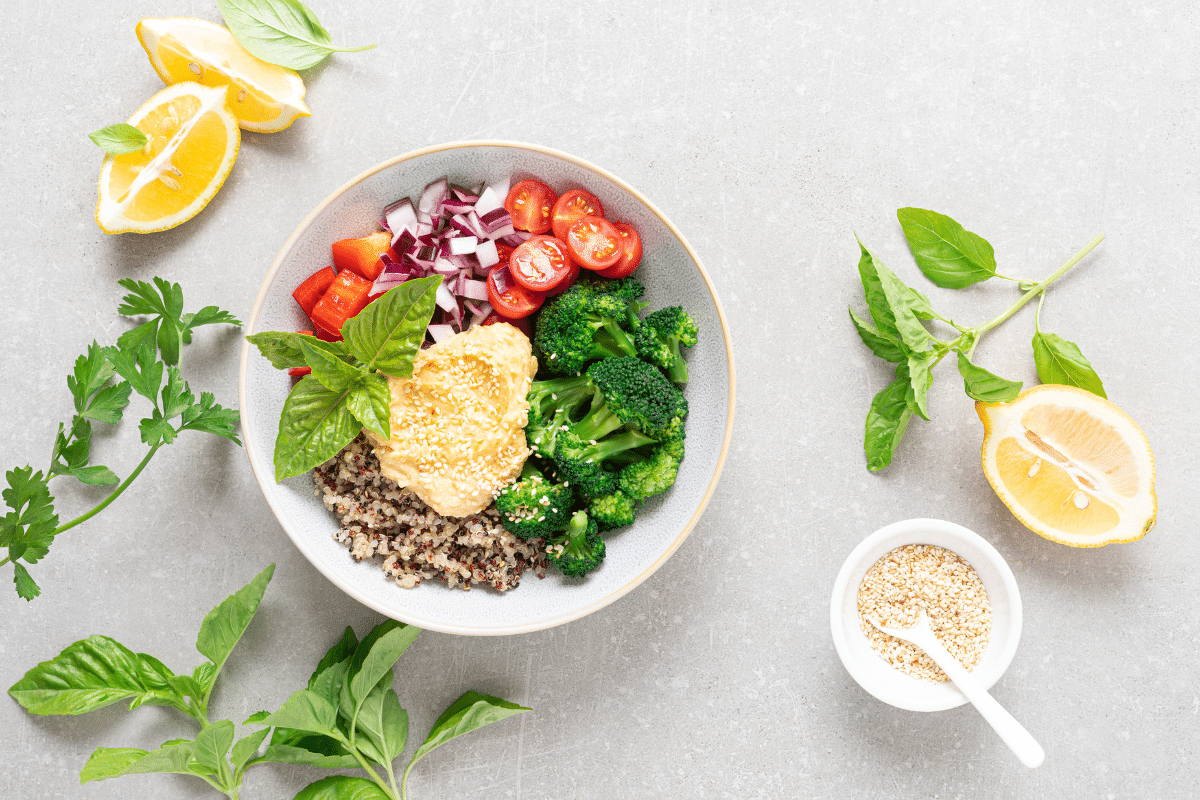
With these healthy alternatives that you can use in place of chickpeas, you can still nourish your body with protein, fiber, and other nutrients. Meanwhile, for chickpea lovers, this list can help you discover even more healthy ingredients that have the same signature flavor and texture.
With these chickpea substitutes, the options are endless! You can create a wide variety of dishes that still fit into a healthy and well-balanced diet. Plus, recreate recipes that the whole family will love!
